Email sales@AllianceChemical.com for 24/7 Expert Support
-
512-365-6838
-
Hydrochloric Acid 37% ACS Reagent Grade
Category : Acids
$29.50
$0.00
Liquid error (snippets/product-blocks line 100): divided by 0
Off
Unit price
/
Shipping Notice: Possible Hazmat Fees
💡 Smart Shipping Tip: Quart & Liter Sizes Often Avoid Hazmat Fees
This size may be classified as hazmat and can incur additional carrier fees. See shipping guide
- ✅ Good news: 1 Quart containers qualify as "Limited Quantity" and bypass hazmat rules
- 💡 Pro tip: Order multiple 1 Quart containers to avoid hazmat fees entirely
- 💰 Hazmat fees can get expensive - especially for larger containers (carrier charges, not our markup)
- 🚚 Ground shipping only - no expedited options for sizes over 1 Qt/1L
Required by 49 CFR § 173.150 for chemical containers larger than 1 quart. Actual fees shown at checkout. View our complete shipping guide →
✅ Great Choice! No Hazmat Fees
1 Quart containers qualify as "Limited Quantity" and avoid hazmat shipping fees.
- 🚀 Faster shipping: Eligible for expedited shipping options including air transport
- 💰 No hazmat fees: Ships as "Limited Quantity" per DOT regulations
- 📦 Convenient size: Perfect for testing or smaller applications
- ♻️ Smart choice: Order multiple quarts to get the volume you need without hazmat charges
Exempted under 49 CFR § 173.150 Limited Quantity provisions for containers ≤1 liter/quart. Learn more in our shipping guide →
Quantity
Size:
Variation:
-
$29.50Delivery every$28.03
-
$49.00Delivery every$46.55
-
$95.00Delivery every$90.25
-
$145.00Delivery every$137.75
-
$88.00Delivery every$83.60
-
$150.00Delivery every$142.50
-
$290.00Delivery every$275.50
-
$9,500.00Delivery every$9,025.00
-
$340.00Delivery every$323.00
-
$1,300.00Delivery every$1,235.00
-
$8,640.64Delivery every$8,208.61
-
$950.00Delivery every$902.50
-
$1,750.00Delivery every$1,662.50
-
$6,900.00Delivery every$6,555.00
-
$8,600.00Delivery every$8,170.00
-
$9,804.00Delivery every$9,313.80
$29.50
$0.00
Liquid error (snippets/product-sticky-blocks line 69): divided by 0
Off
Unit price
/
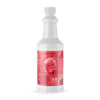
Hydrochloric Acid 37% ACS Reagent Grade
$29.50
$0.00
Liquid error (snippets/sticky-product line 56): divided by 0
Off
Unit price
/
Size:
Variation:
-
$29.50Delivery every$28.03
-
$49.00Delivery every$46.55
-
$95.00Delivery every$90.25
-
$145.00Delivery every$137.75
-
$88.00Delivery every$83.60
-
$150.00Delivery every$142.50
-
$290.00Delivery every$275.50
-
$9,500.00Delivery every$9,025.00
-
$340.00Delivery every$323.00
-
$1,300.00Delivery every$1,235.00
-
$8,640.64Delivery every$8,208.61
-
$950.00Delivery every$902.50
-
$1,750.00Delivery every$1,662.50
-
$6,900.00Delivery every$6,555.00
-
$8,600.00Delivery every$8,170.00
-
$9,804.00Delivery every$9,313.80
Ask a question
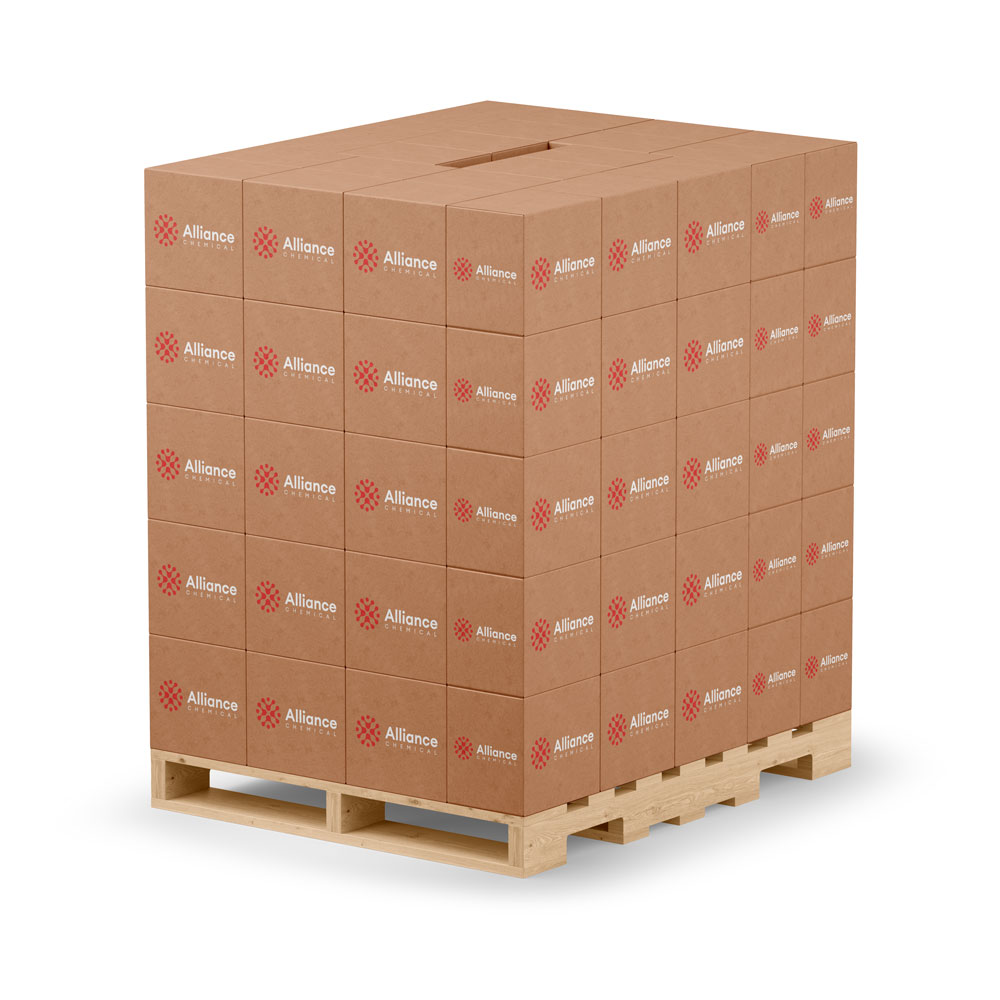

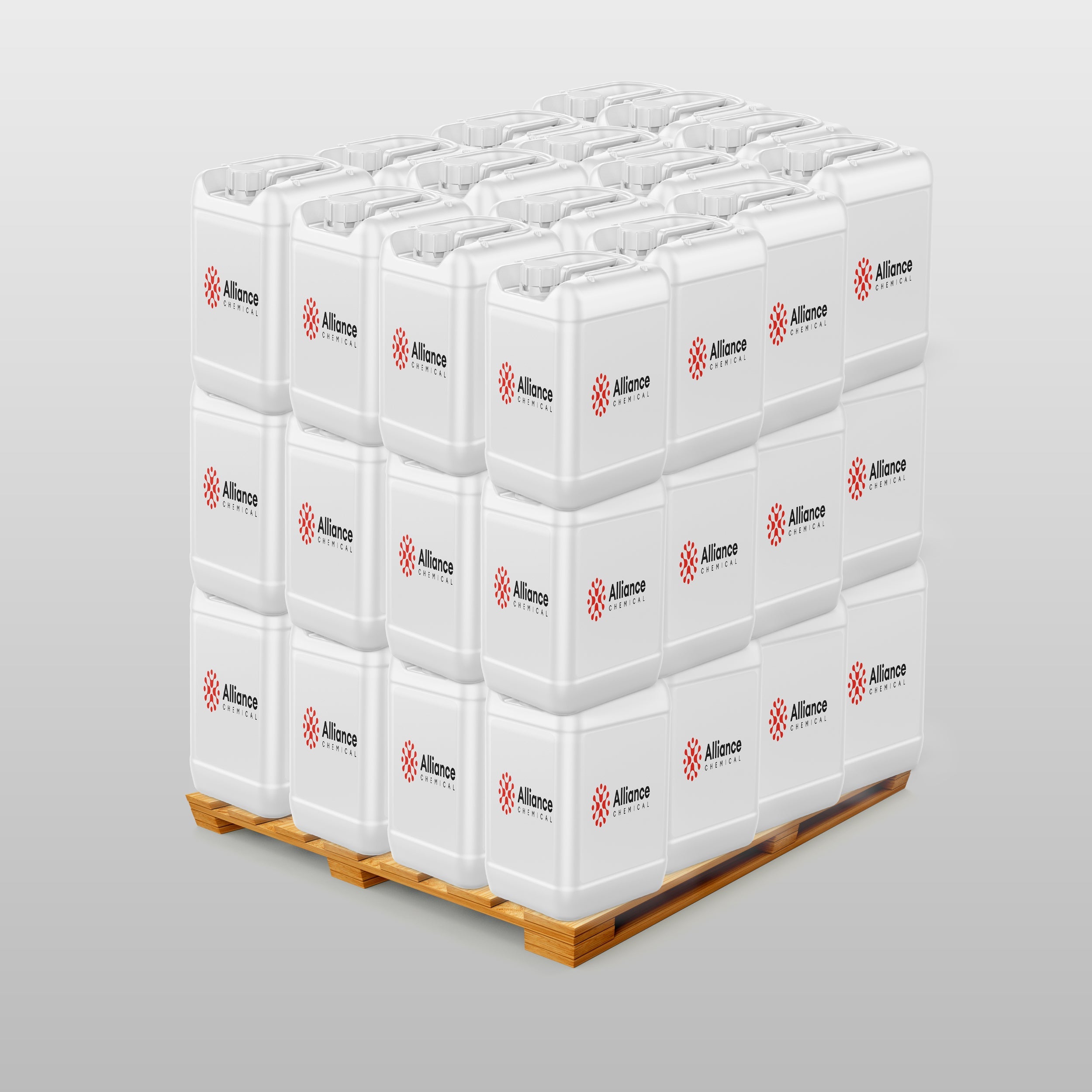
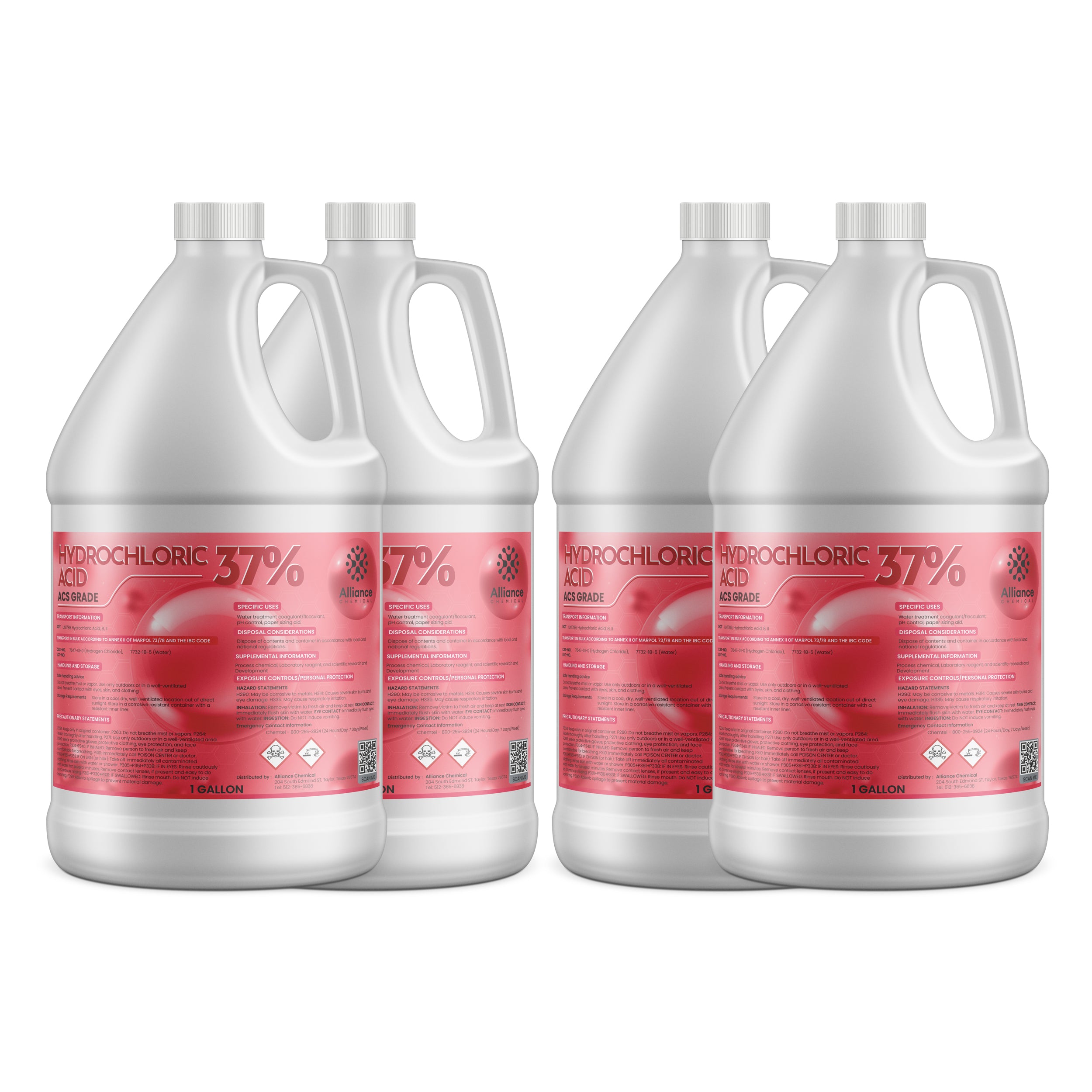
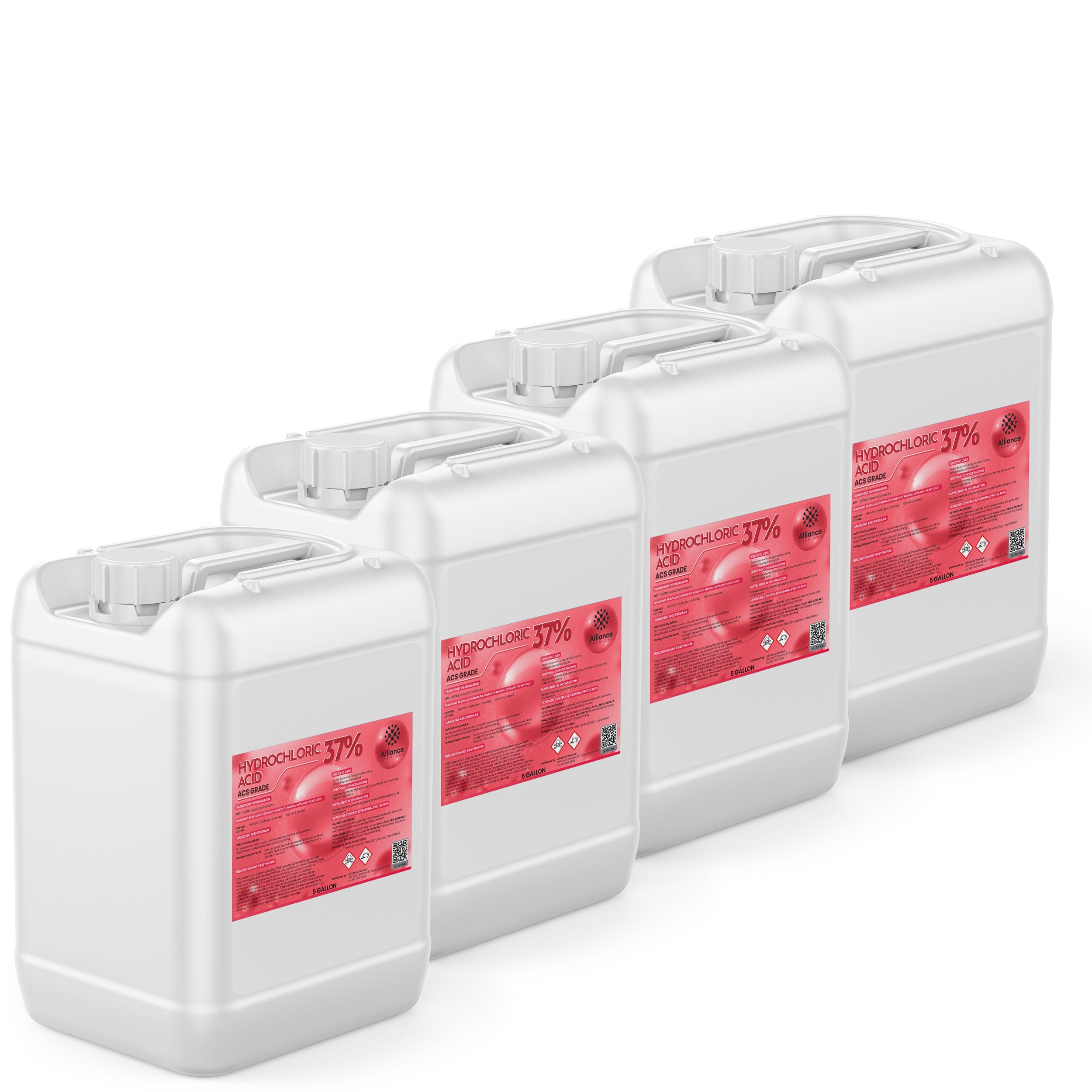
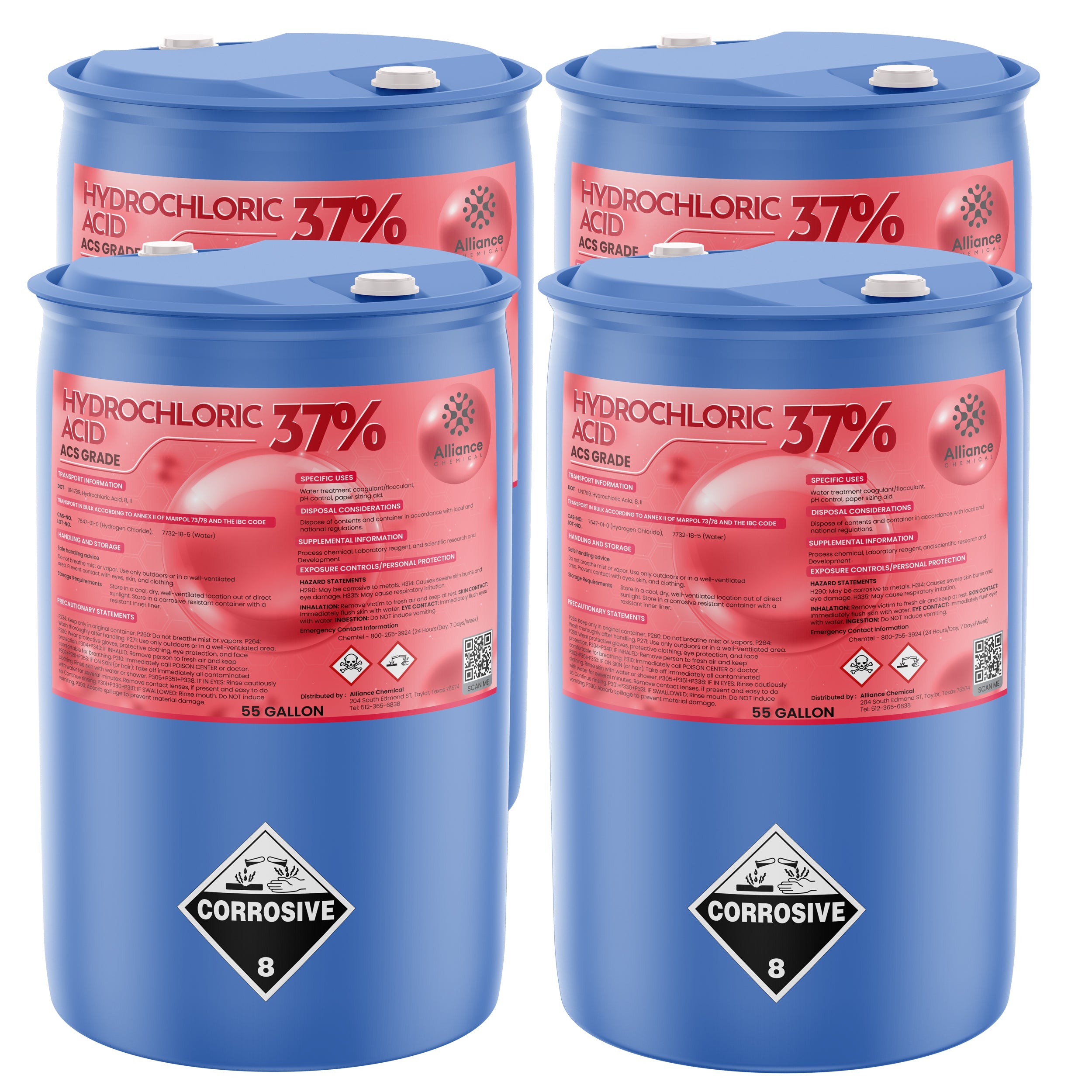

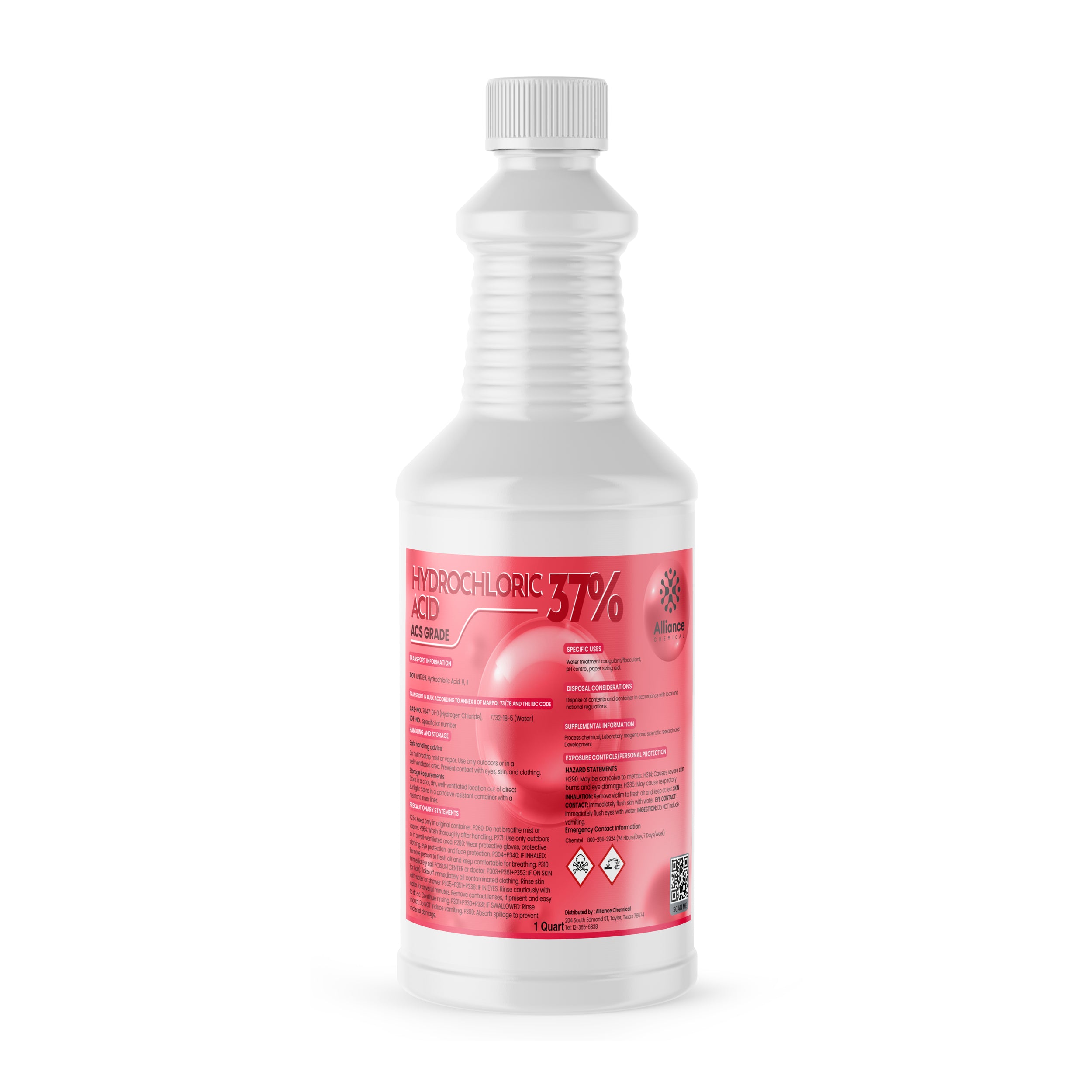
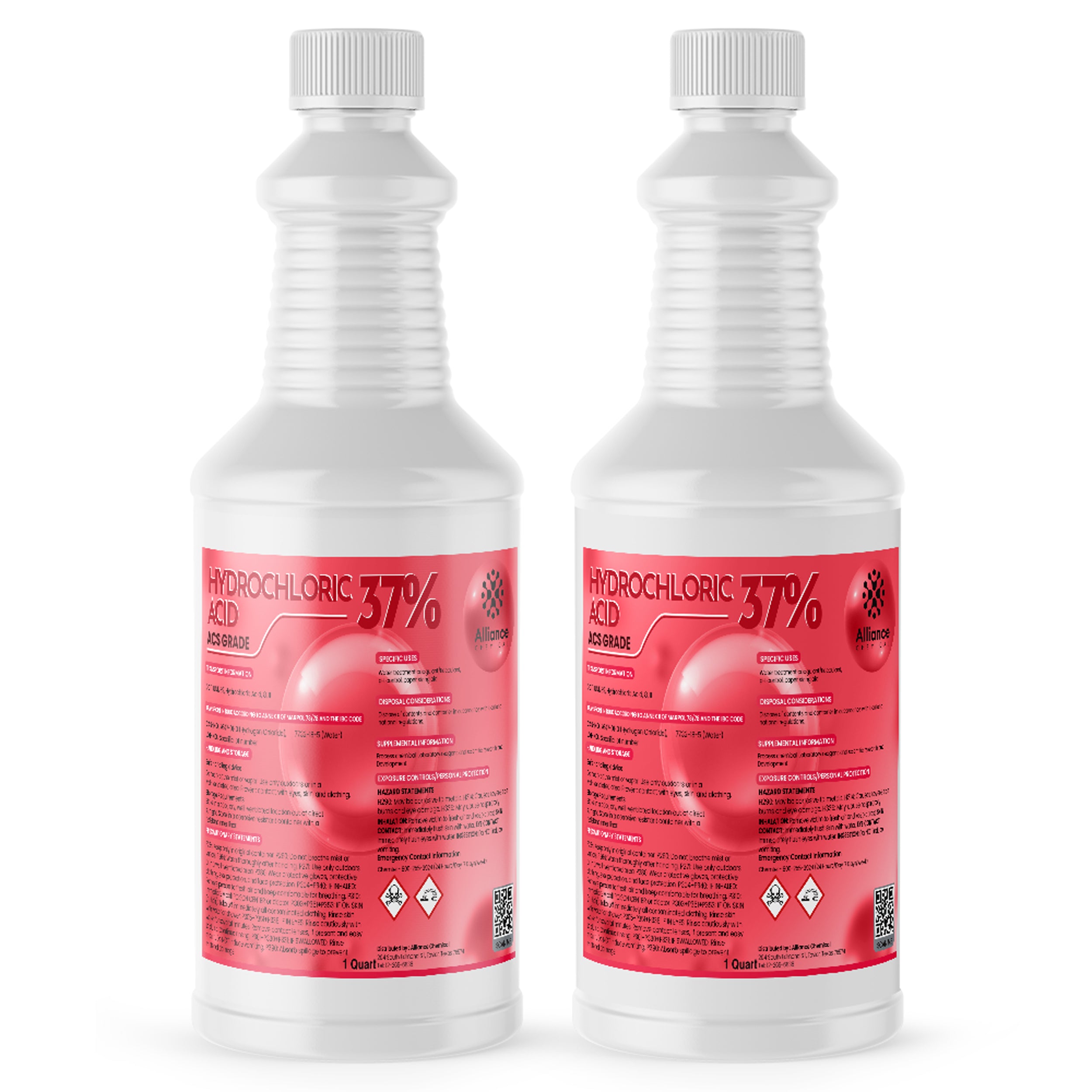
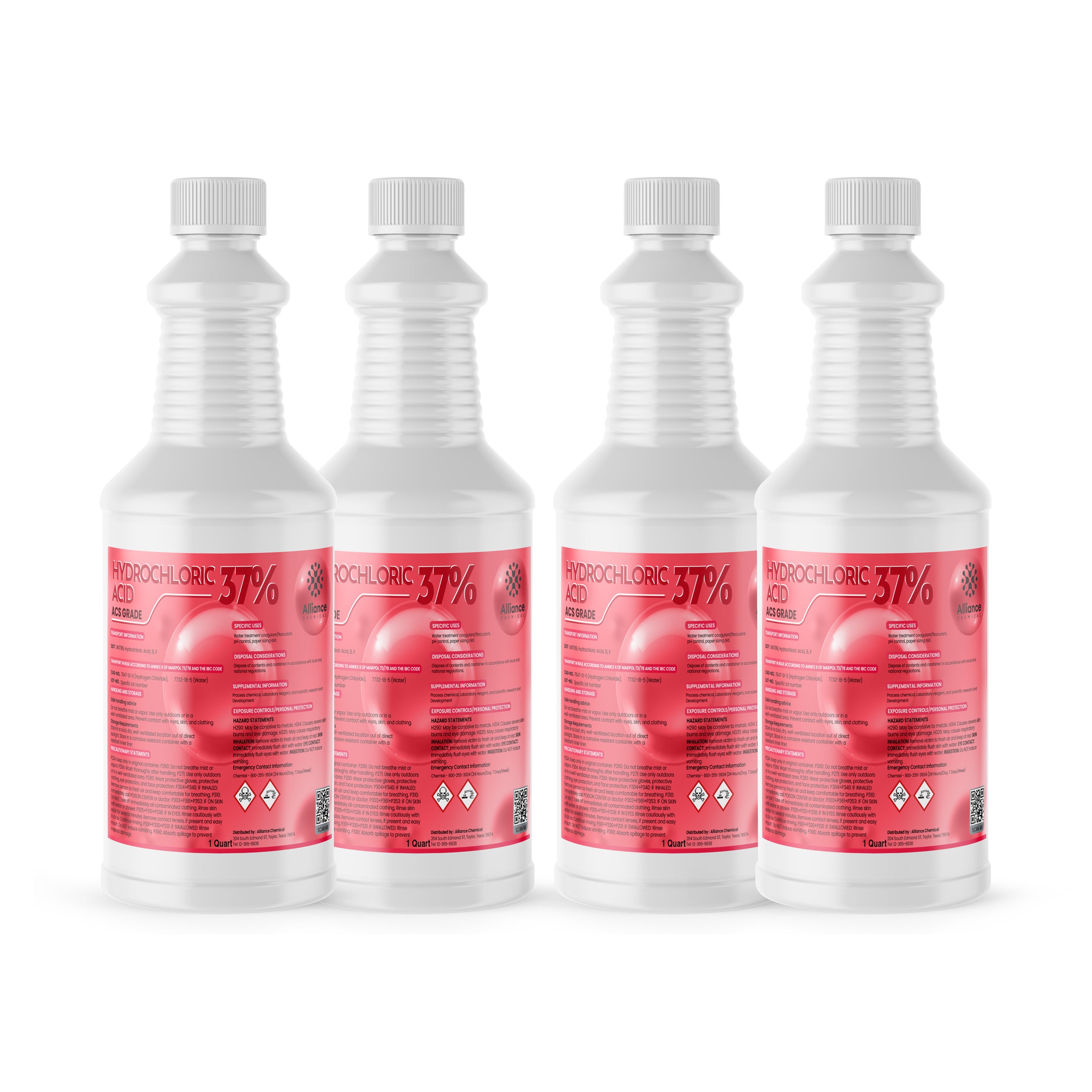
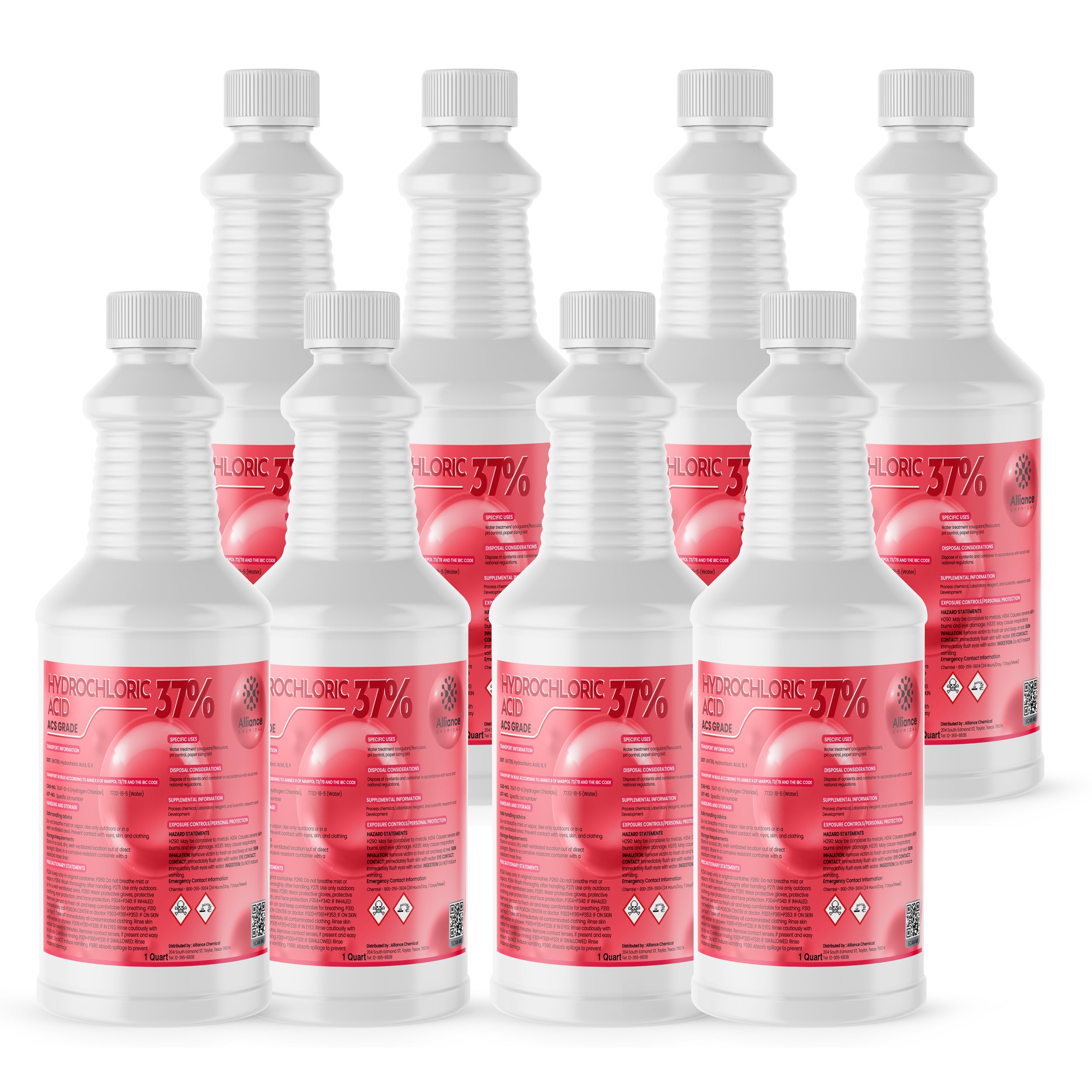
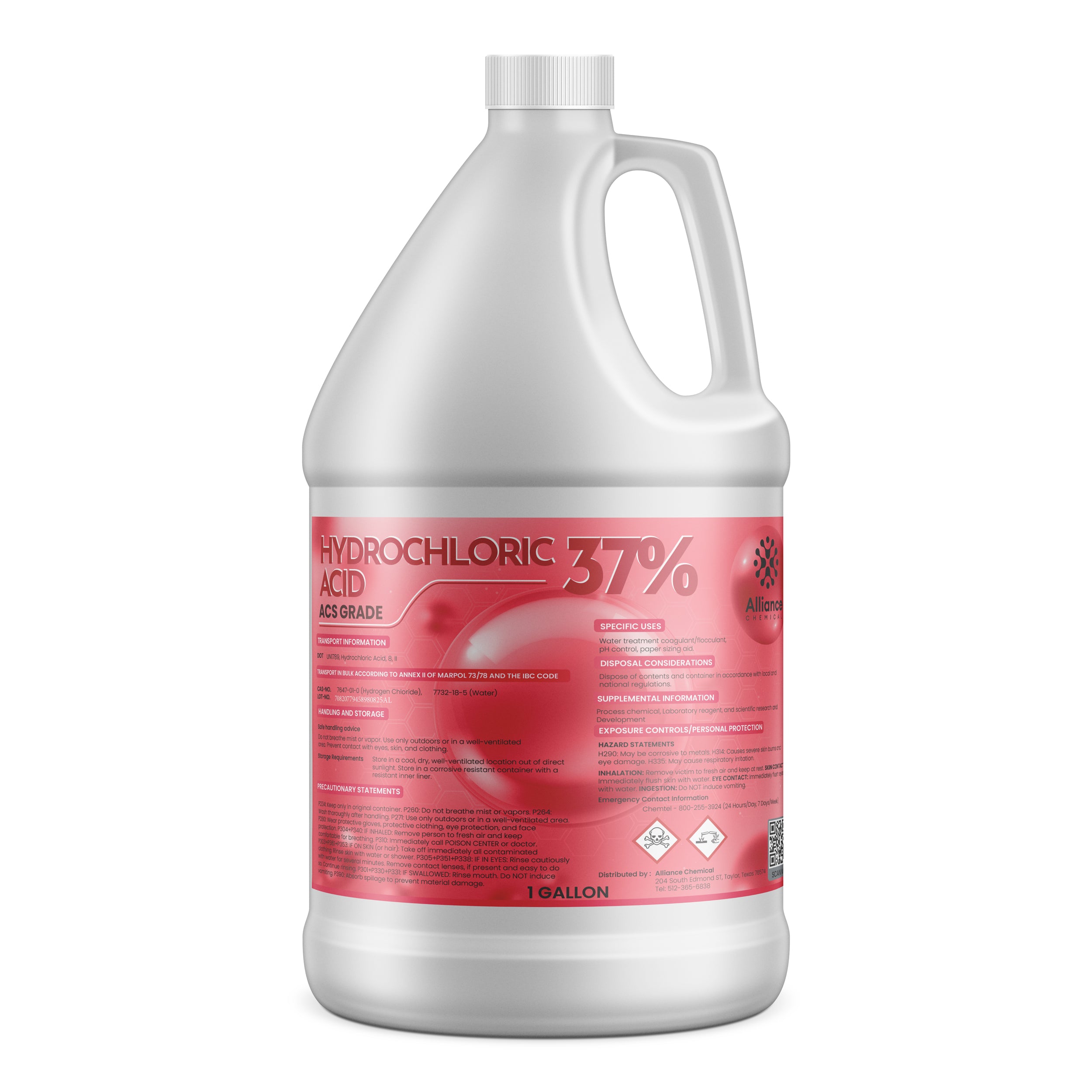
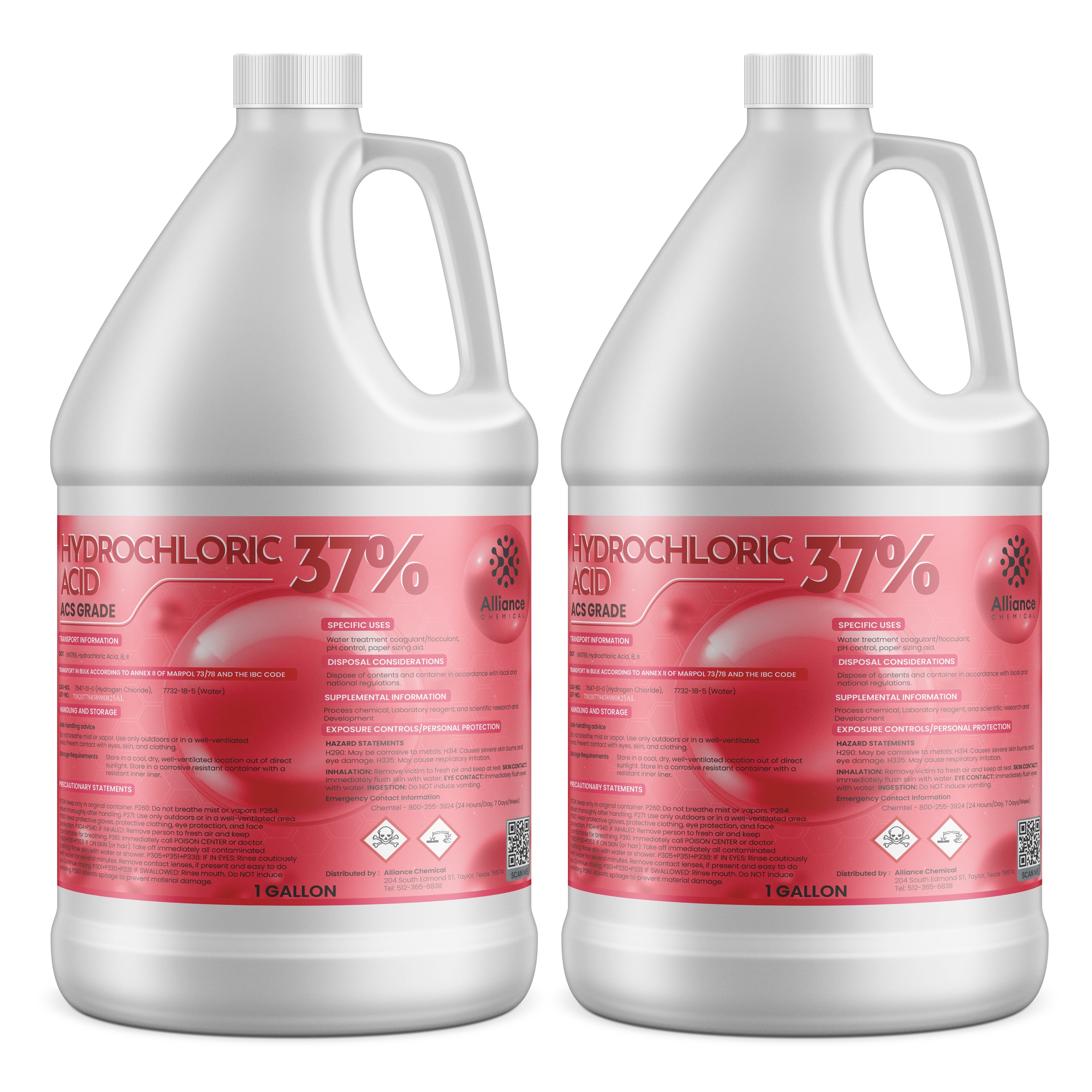
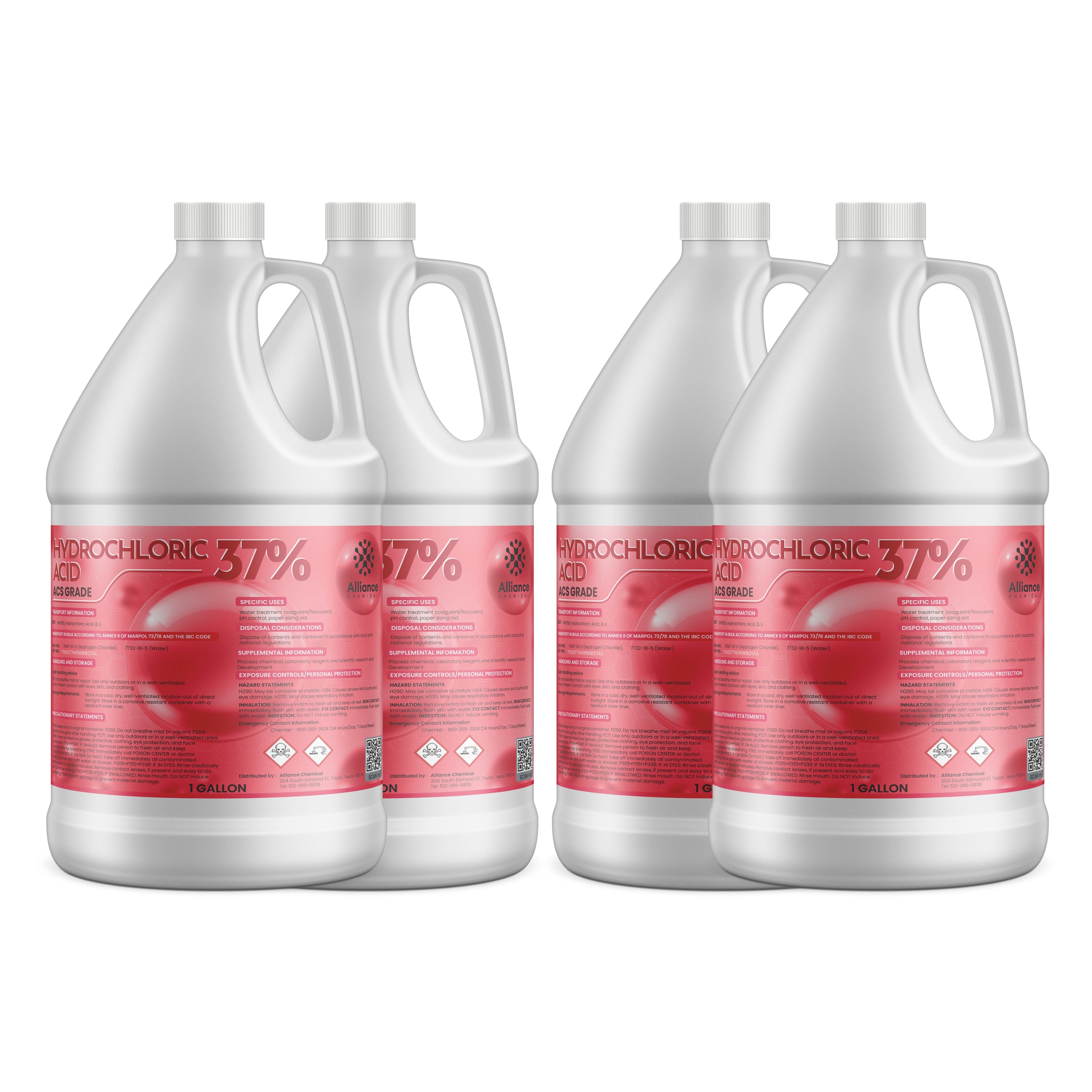
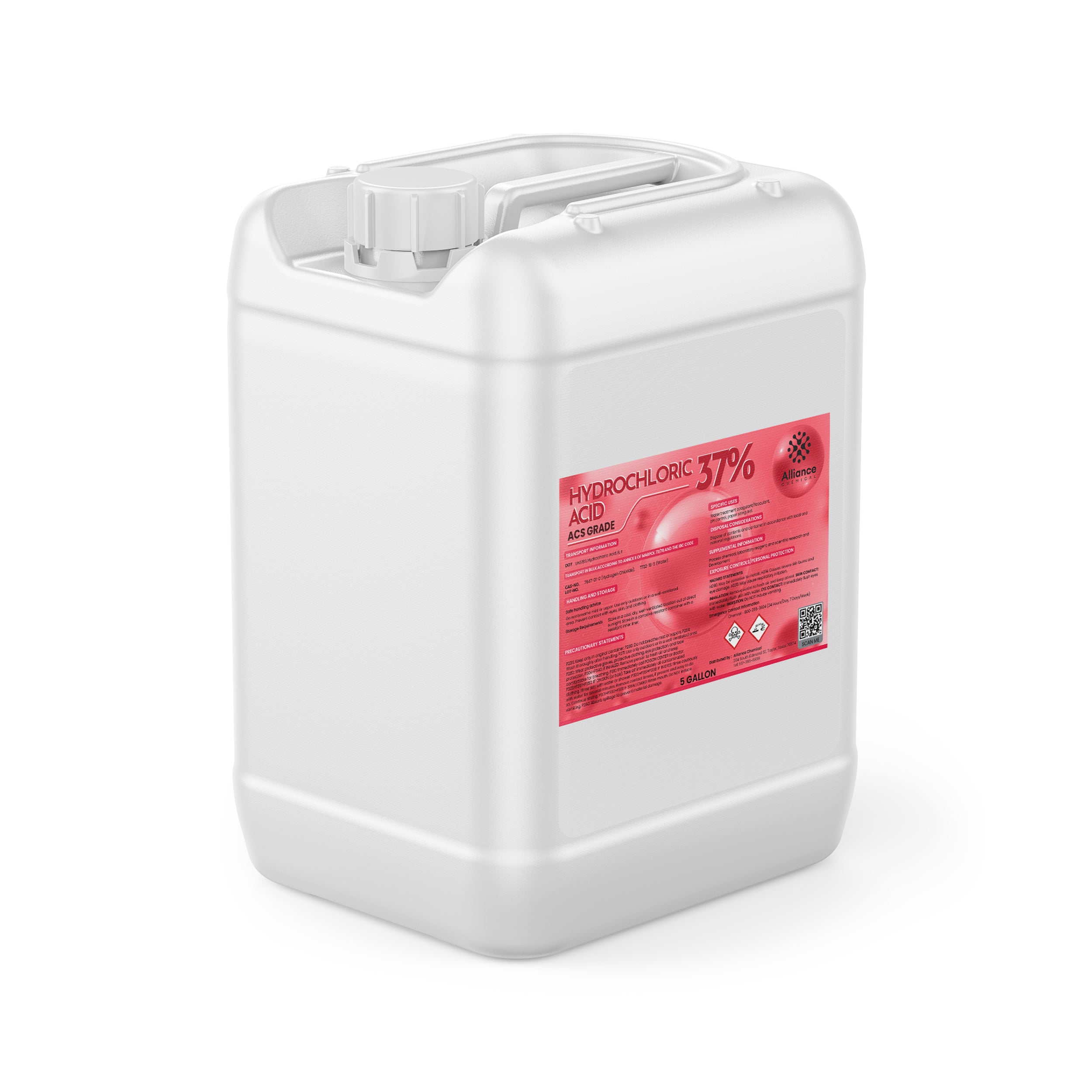

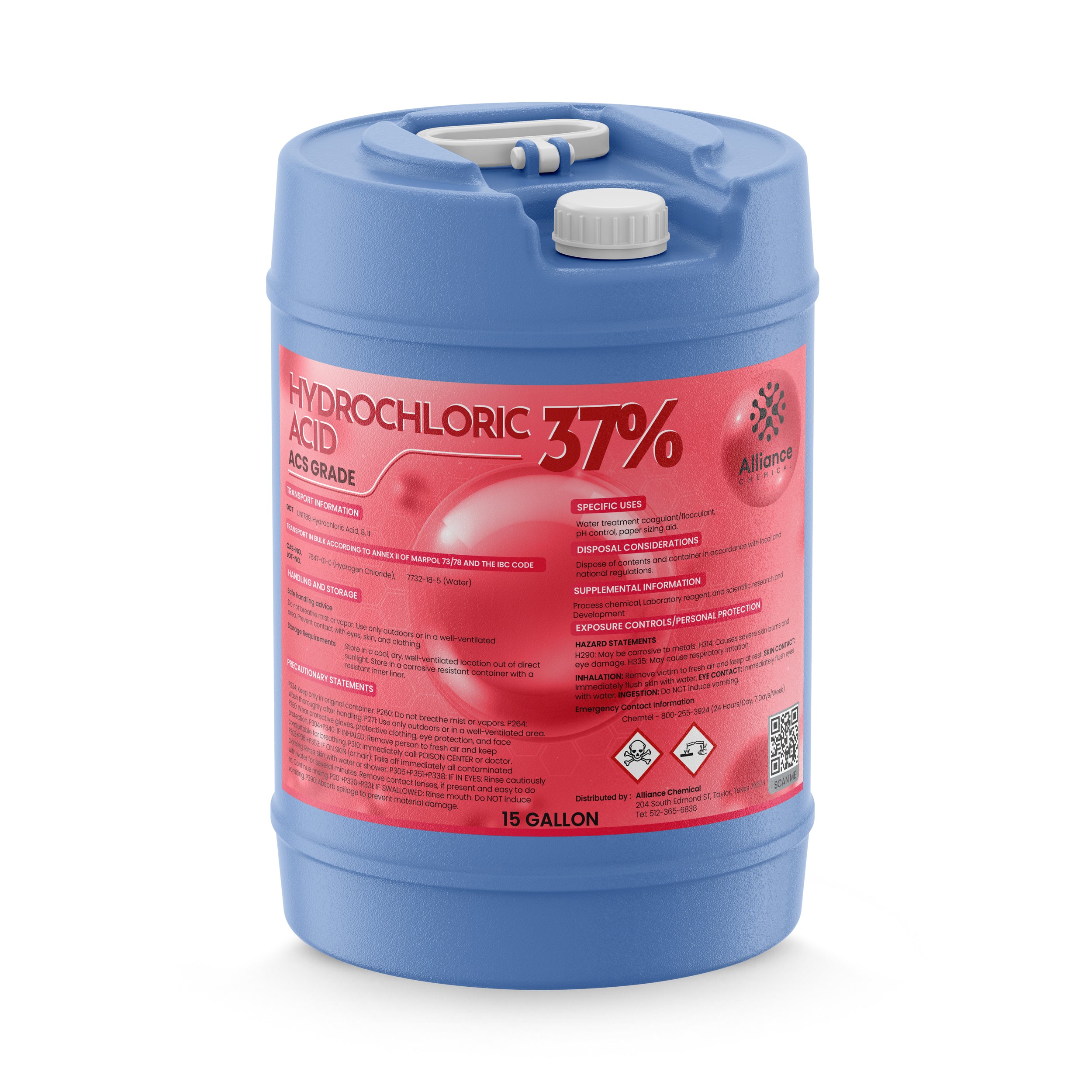
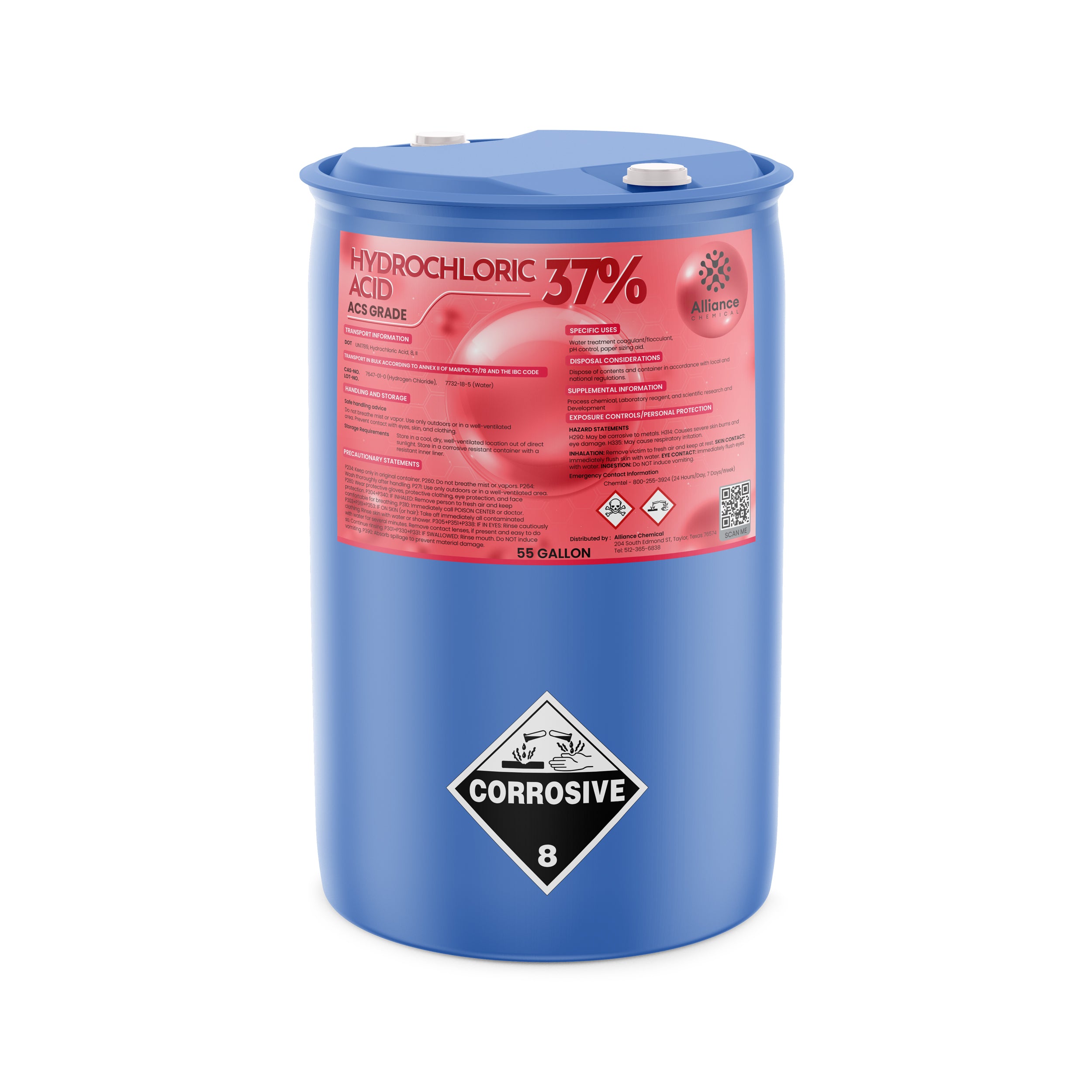
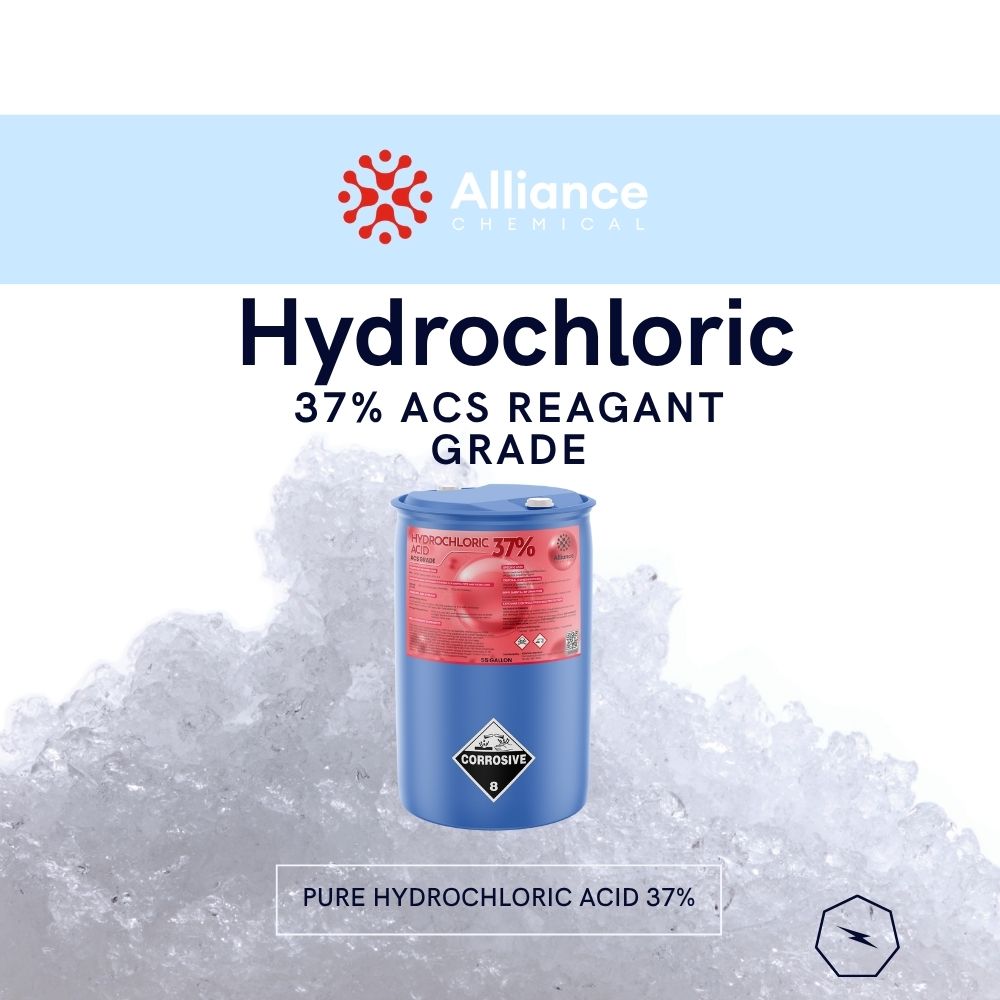

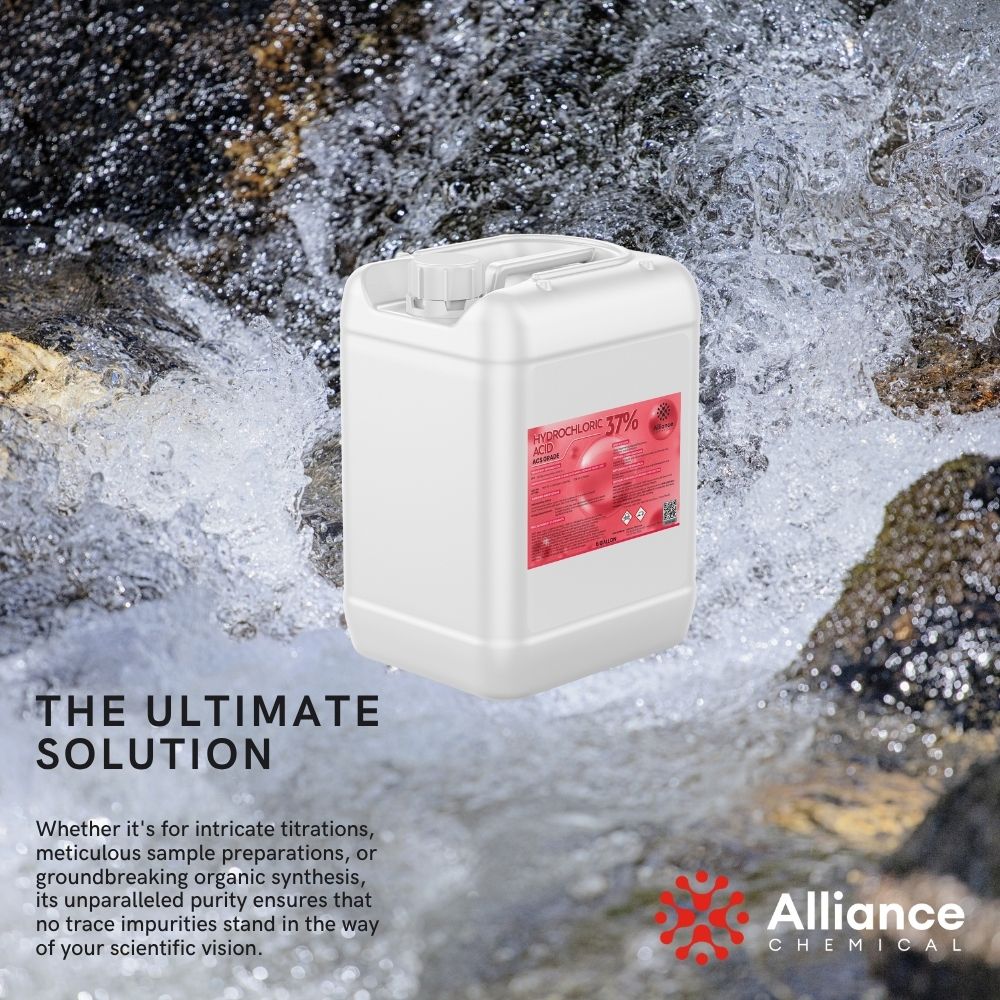
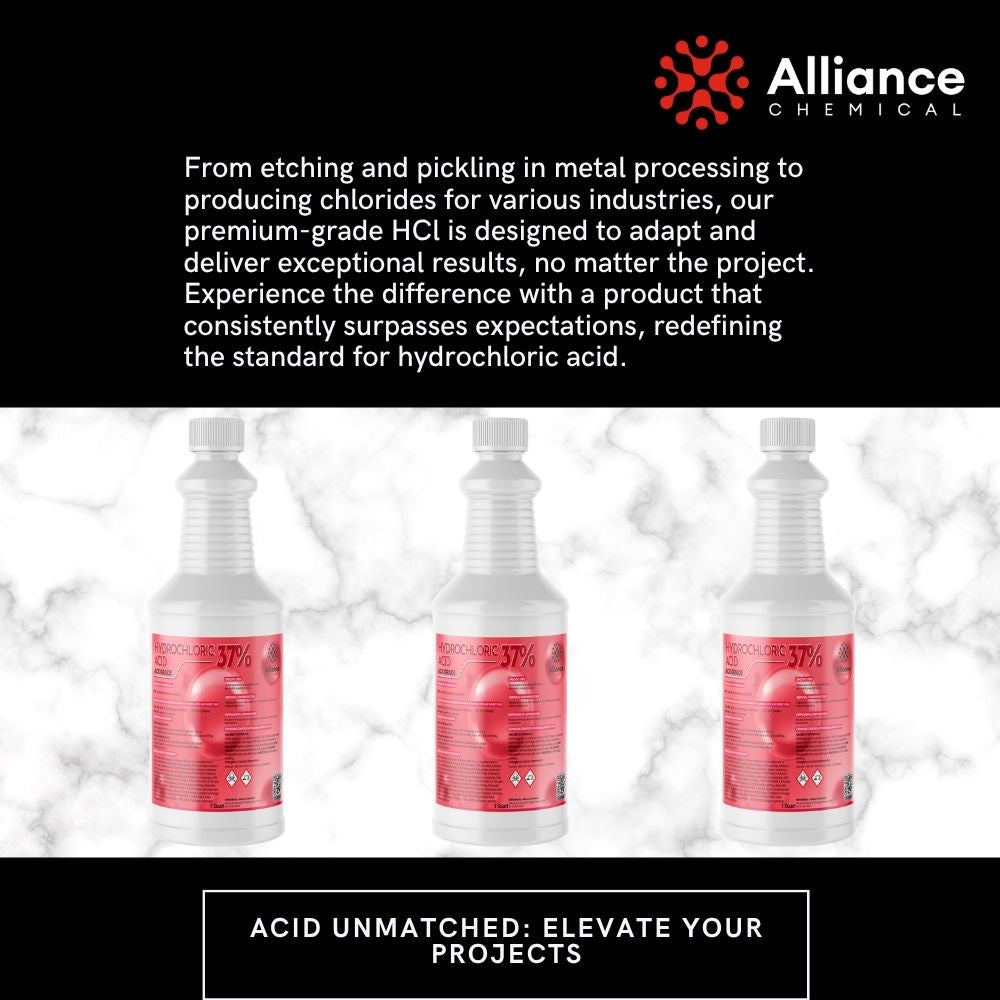
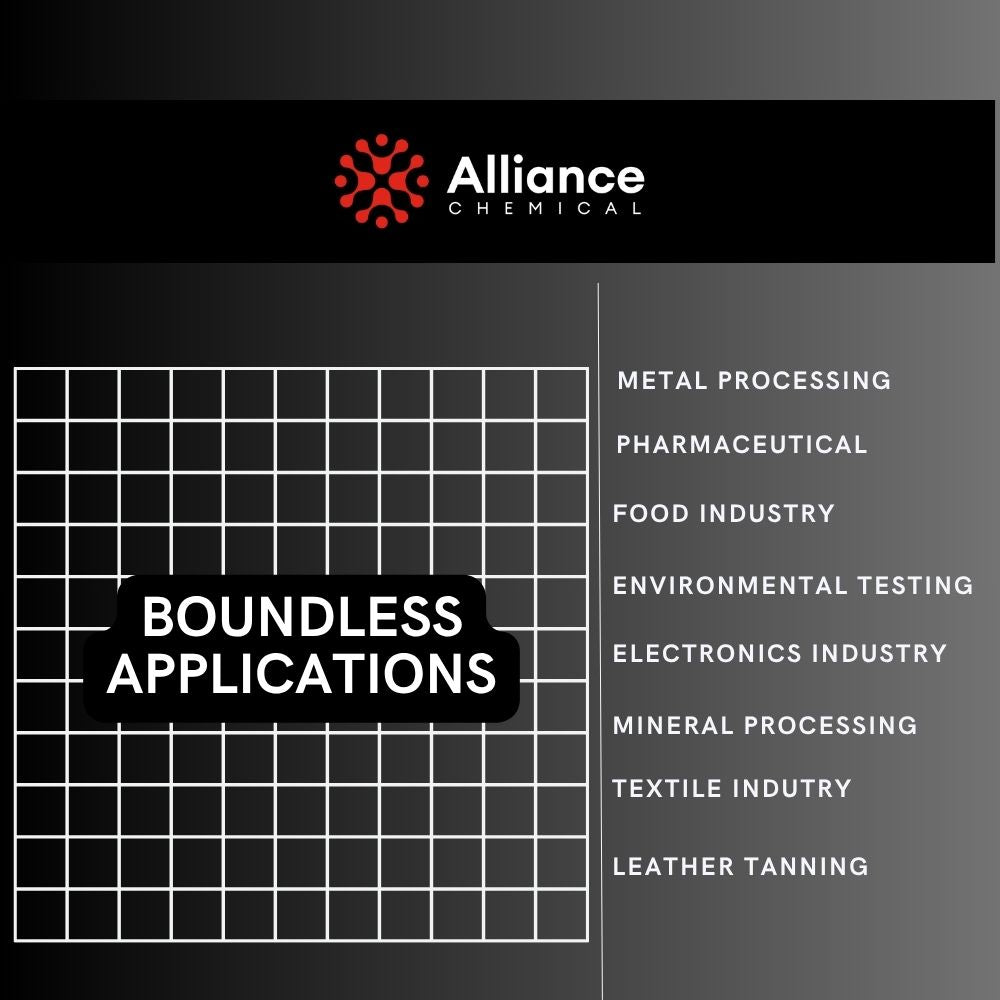

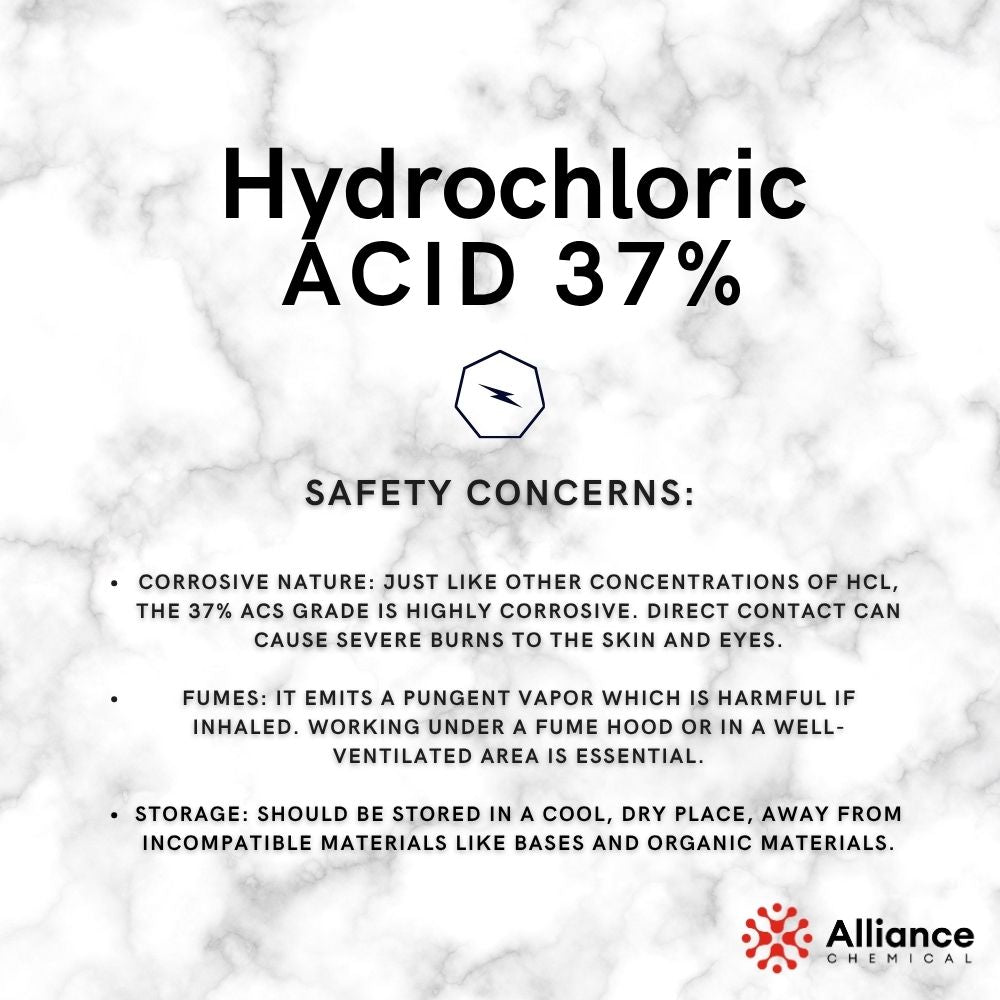

- Description
- Product Documents
Product Overview
Hydrochloric Acid 37% ACS Reagent Grade is a high-purity, inorganic mineral acid formulated for analytical and laboratory applications where stringent purity and consistent performance are essential. This ACS Grade solution contains 37% w/w HCl in water, providing a strongly acidic medium suitable for pH adjustment, sample digestion, and a wide range of chemical syntheses. The product is prepared to meet the rigorous standards of Reagent Chemicals (11th Edition) and USP-NF Monograph requirements, with controlled trace metal content and low residue after evaporation to minimize analytical interference and ensure reproducible results in sensitive procedures.
With a clear to pale yellow appearance and a pungent, irritating odor, the solution is highly miscible with water and presents a typical density near 1.19 g/mL at 25°C. The lot-specific Certificate of Analysis (COA) summarizes key performance parameters, including assay accuracy, color, impurity profile, and heavy metals content, enabling customers to validate suitability for trace-level analyses, calorimetry, and preparative workflows. This product is provided with storage and handling guidance aligned to safety standards and industry best practices to support reliable, compliant use in regulated environments.
Key Properties
- Appearance: Colorless to pale yellow liquid
- Chemical Formula: HCl
- Molecular Weight: 36.46 g/mol
- Boiling Point: 100°C (azeotrope with water)
- Specific Gravity (20°C): 1.19 (range 1.18 – 1.20)
- Residue After Ignition: Max 0.01% (typical 0.005%)
- Chloride (Cl): Max 3,000 ppm (typical 1,500 ppm)
- Nitrate (NO3⁻): Max 5 ppm (typical 2 ppm)
- Ammonium (NH4⁺): Max 1 ppm (typical 0.5 ppm)
- Sulfate (SO4²⁻): Max 5 ppm (typical 2 ppm)
- Phosphate (PO4³⁻): Max 1 ppm (typical 0.5 ppm)
- Arsenic (As): Max 0.01 ppm (typical 0.005 ppm)
- Heavy Metals (as Pb): Max 0.1 ppm (typical 0.02 ppm)
- Iron (Fe): Max 0.2 ppm (typical 0.05 ppm)
- Copper (Cu): Max 0.2 ppm (typical 0.05 ppm)
- Manganese (Mn): Max 0.2 ppm (typical 0.05 ppm)
- Nickel (Ni): Max 0.2 ppm (typical 0.05 ppm)
- Zinc (Zn): Max 0.5 ppm (typical 0.1 ppm)
- Aluminum (Al): Max 0.5 ppm (typical 0.1 ppm)
- Chromium (Cr): Max 0.2 ppm (typical 0.05 ppm)
- Cobalt (Co): Max 0.05 ppm (typical 0.01 ppm)
- Calcium (Ca): Max 0.5 ppm (typical 0.1 ppm)
- Magnesium (Mg): Max 0.5 ppm (typical 0.1 ppm)
- Sodium (Na): Max 0.2 ppm (typical 0.05 ppm)
- Potassium (K): Max 0.2 ppm (typical 0.05 ppm)
- Available Chlorine (Cl₂): 99–100% (typical 99.6%)
Common Applications
- pH Adjustment: Industrial water treatment and laboratory workflows require precise acidification for process control and titration standardization, with ACS-grade purity to minimize interference.
- Chemical Synthesis: Used as a reagent in synthesis pathways where strong acidity and chloride sources are needed, supporting pharmaceutical and specialty chemical development under controlled impurity profiles.
- Metal Cleaning: Employed for oxide and scale removal in metal processing and surface preparation, leveraging rapid dissolution and compatibility with corrosion-resistant containers.
- Laboratory Reagent: Standard calibration, sample digestion, and analytical titrations in high-purity chemistry labs, ensuring traceable results and compatibility with analytical instrumentation.
- Catalyst Preparation/Activation: Serves as a reactive acid component in certain catalytic cycles and acid-activated surface treatments within chemical manufacturing.
Safety Precautions
Handle under a chemical-compatible fume hood with appropriate PPE: chemical-resistant gloves, splash goggles or face shield, lab coat, and acid-resistant apron when handling concentrated HCl solutions. Store in corrosion-resistant containers (HDPE or glass) away from metals and incompatible bases or organics; ensure containers are tightly closed to minimize moisture uptake and vapor release. Use secondary containment and proper ventilation during transfer and decanting to prevent exposure and corrosion hazards.
In case of exposure, follow SDS guidance: eyes – rinse with water for several minutes; skin – remove contaminated clothing and rinse; inhalation – move to fresh air and seek medical attention if symptoms persist; ingestion – rinse mouth and seek medical attention immediately. Transport UN 1789, hydrochloric acid, Class 8, PG II, with appropriate labeling and spill response resources on hand.
Benefits
✔ High-purity ACS Grade – Meets ACS Reagent Grade specifications and USP-NF Monograph requirements for reliable analytical performance and reproducibility in regulated environments.
✔ Low Impurity Profile – Optimized trace metal and anionic impurity levels minimize interference in analytical measurements and sample preparation.
✔ Certified COA Parameters – Expanded COA with explicit test methods (e.g., IC, ICP-OES, titration) ensures traceable quality for critical workflows.
| Property | Value |
|---|---|
| Molecular Weight | 36.46 g/mol |
| Formula | HCl |
| Assay | 37% |
| Flash Point | Does not apply |
| Form | Liquid |
| Solubility | Fully miscible with water, most organic solvents |
| Appearance | Clear, colorless corrosive liquid |
| Melting Point | -114 °C |
| Boiling Point | 108 °C |
| Industry | Research, Chemical Manufacturing, Materials Testing, Industrial Processing |
Other top rated products


























9QB-Y99-XMR
$29.50
$0.00
Liquid error (snippets/product-blocks line 100): divided by 0
Off
Unit price
/
Shipping Notice: Possible Hazmat Fees
💡 Smart Shipping Tip: Quart & Liter Sizes Often Avoid Hazmat Fees
This size may be classified as hazmat and can incur additional carrier fees. See shipping guide
- ✅ Good news: 1 Quart containers qualify as "Limited Quantity" and bypass hazmat rules
- 💡 Pro tip: Order multiple 1 Quart containers to avoid hazmat fees entirely
- 💰 Hazmat fees can get expensive - especially for larger containers (carrier charges, not our markup)
- 🚚 Ground shipping only - no expedited options for sizes over 1 Qt/1L
Required by 49 CFR § 173.150 for chemical containers larger than 1 quart. Actual fees shown at checkout. View our complete shipping guide →
✅ Great Choice! No Hazmat Fees
1 Quart containers qualify as "Limited Quantity" and avoid hazmat shipping fees.
- 🚀 Faster shipping: Eligible for expedited shipping options including air transport
- 💰 No hazmat fees: Ships as "Limited Quantity" per DOT regulations
- 📦 Convenient size: Perfect for testing or smaller applications
- ♻️ Smart choice: Order multiple quarts to get the volume you need without hazmat charges
Exempted under 49 CFR § 173.150 Limited Quantity provisions for containers ≤1 liter/quart. Learn more in our shipping guide →
Size:
Variation:
-
$29.50Delivery every$28.03
-
$49.00Delivery every$46.55
-
$95.00Delivery every$90.25
-
$145.00Delivery every$137.75
-
$88.00Delivery every$83.60
-
$150.00Delivery every$142.50
-
$290.00Delivery every$275.50
-
$9,500.00Delivery every$9,025.00
-
$340.00Delivery every$323.00
-
$1,300.00Delivery every$1,235.00
-
$8,640.64Delivery every$8,208.61
-
$950.00Delivery every$902.50
-
$1,750.00Delivery every$1,662.50
-
$6,900.00Delivery every$6,555.00
-
$8,600.00Delivery every$8,170.00
-
$9,804.00Delivery every$9,313.80
Compare Products
| Price |
|---|
| SKU |
| Rating |
| Discount |
| Vendor |
| Tags |
| Weight |
| Stock |
| Short Description |
